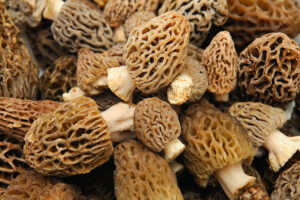Pyrosomes are often called the “unicorns of the sea”. Why? Because we barely know anything about them. Since 2013, they have made several appearances, and scientists have only scratched the surface of what these creatures are about. They are elusive, mysterious, alien-like, and completely harmless.

A small pyrosome found in Oregon. Photo: Alexander Clay Detweiler/Shutterstock
French explorer François Peron first discovered pyrosomes in the early 1800s. The word “pyrosome” is Greek for “fiery-body”, referring to its bioluminescent characteristics. While a pyrosome looks like one creature, it is actually made up of thousands. It is a colony of millimetre-long “zooids”, which are invertebrates. These zooids join together to form a gelatinous tubular body that can range from a couple of centimetres to 18m.
A hollow centre
Some pyrosomes have a hollow centre big enough to shelter smaller creatures like fish and shrimp or even for a human to swim through. As well as housing other marine animals, pyrosomes also feed turtles, birds, and fish, and ocean bottom dwellers. Observers have seen crabs and eels feeding on dead pyrosomes on the ocean floor.
Most species of pyrosome occur in tropical waters but a few types have turned up in colder regions, including the Antarctic. Individual zooids asexually reproduce because they are hermaphroditic in nature. This means that they clone themselves, which comes in handy when parts of the body are missing. In a way, pyrosomes are capable of being immortal.

A wormhole to the Delta Quadrant? No, a close-up of a pyrosome’s mouth. Photo: dlearyous photography/Shutterstock
They emit light, like fireflies
In the dark, pyrosomes, via their individual zooids, emit light when stimulated via an enzyme called luciferase. They light up when other zooids signal them. Sometimes, this communication creates a wave of blue, red, and green light up and down the tube. They also emit light when threatened. In daylight, they have a slightly pink, blue, or yellow color.
Pyrosomes are not harmful to humans since they are primarily filter-feeders. As it drifts worm-like through the ocean, it feasts on microscopic plankton, filtering the water through its gelatinous skin. Scientists found that the filtration process enables the pyrosome to very slowly propel itself forward. The zooids create a “feeding current”, expelling water to create tiny movements. Pyrosomes usually live in the upper layers of the sea.
The pyrosome can migrate 410m per day. Scientists found that pyrosome behavior changes with depth and time of day. After sunset, they descend to around 700m before rising again in the morning.

Diver and pyrosome. Photo: dlearyous photography/Shutterstock
The warm blob
Researchers have begun to connect pyrosomes and climate change. In 2013, they began to appear when the waters around the west coast of the United States experienced higher temperatures. Officials called this the “warm blob”.
Thousands of pyrosomes managed to drift into the Columbia River and heavily affected the salmon fishing industry. A few years later, in 2016 and 2017, they reappeared in this area, as well as Alaska. This may be linked to rising temperatures, in the same way that other, larger animals are likewise extending their ranges into formerly inhospitable areas.






